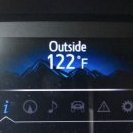Just chocked on apiece of popcorn when I read your latest logic 😂
A stop is a stop regardless to the CDI box.
If the lanyard is pulled the CDI box signal is taken to ground and stops the bike regardless of crank and piston position.
If the bike is stopped via the clutch the lack of a magneto pulse signal from the pick up coil is missing so it stops the bike.
In either scenario the full injection system I still under pressure and piston and crank will stop at a random part of its stroke.
Your are entitled to your logic
I am also entiltied to mine and I don't buy your logic
No foul, no worries, just opinions.


